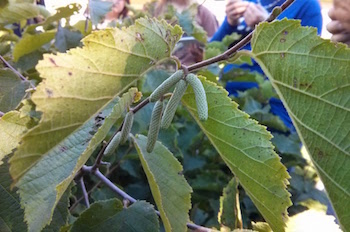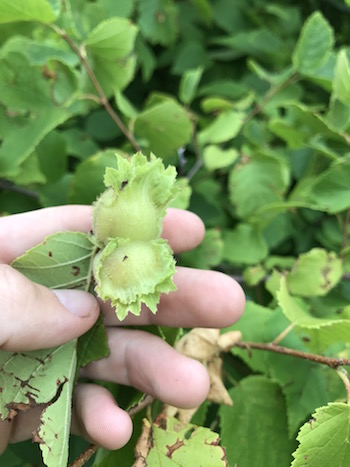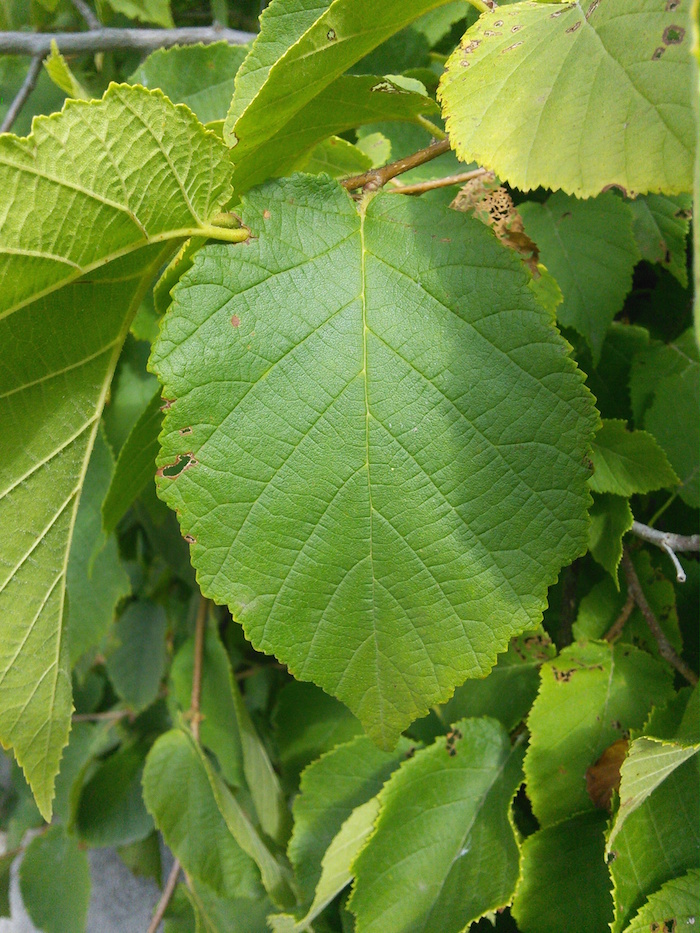
American hazelnut is a large shrub or small tree that many people plant for the benefits its nuts provide. The nuts are called either hazelnuts or filberts, and attract game animals and other wildlife. A relative of American hazel, called beaked hazel (C. cornuta), is common in the forests of northern Minnesota. Although the most common hazelnut comes from a European variety, C. avellana, hazelnuts from both C. americana and C. cornuta are edible to humans and animals. The versatile nuts can be used in baking, pastes (such as Nutella), hog feed, and coffee flavoring. Hazelnut is utilized by the cosmetics industry for its oleic acid production, a fatty acid which is considered to have emollient or skin softening properties. The nut is also a good source of vitamin E.
The buds of the shrub are gray brown and on thin, zig-zag shaped twigs with small red hairs. American hazelnut bark is light brown to gray. Its leaves are oval, have jagged edges, and a heart-shaped base. The nuts are in a soft, green shell that can be peeled off to reveal a harder shell that must be cracked to remove. The plant will grow between 3 and 13 feet tall and tends to form thickets as it spreads readily by rhizomes. The plant is monoecious imperfect with both male and female flowers forming separately on the same plant. Male flowers form on pendulous catkins while female flowers can be seen by the red or magenta colored stigmas appearing from buds.
American hazelnut is commonly a dominant or codominant understory species in native ecosystems such as the maple-basswood forests of Minnesota and Wisconsin as well as jack pine, paper birch, trembling aspen, and northern pin oak forest communities. It is quite shade tolerant but will also grow in the open. The plant is commonly found in prairies, along forest margins, streams, and roads.
American hazelnut can sometimes become overly competitive in disturbed ecosystems such as native prairie that is not allowed to burn due to instituted fire control causing conditions unfavorable for native prairie species. While the top of plant is susceptible to fire, the rhizomes are able to withstand moderate and infrequent fires. Conifer regeneration can also be hindered by the plant’s aggressive growth.
The Forever Green Initiative, a program from the University of Minnesota and the USDA Agriculture Research Service that works to develop new crops in Minnesota, is currently investigating the use of C. americana for larger scale hazelnut production.
Issues:
American hazelnut does not have any major pests associated with it.
Other Resources:



